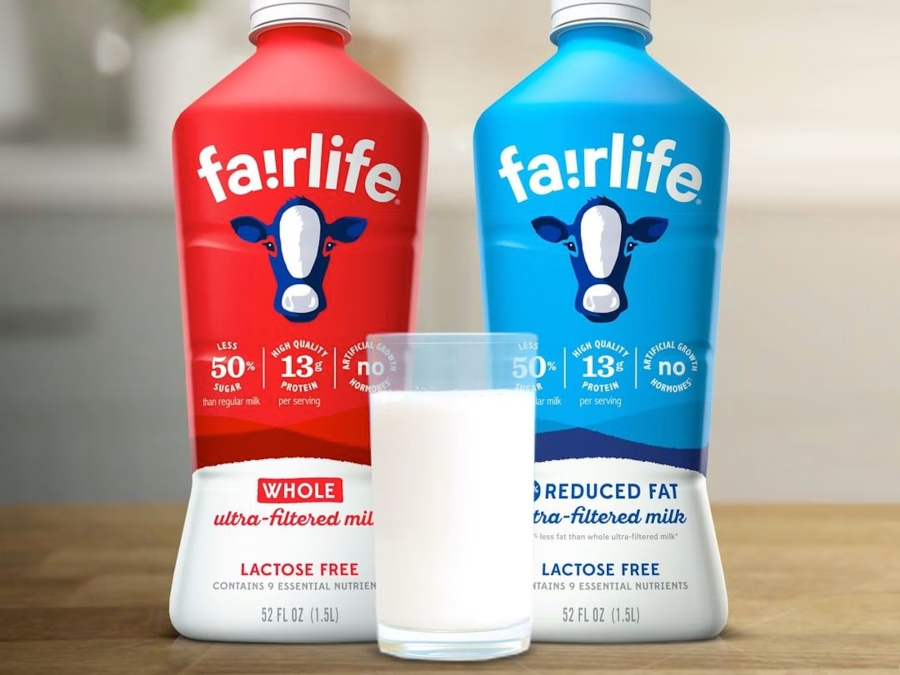Discover how University of Minnesota’s innovative high-protein cheese spread, Yay-tost, won top prize at DMI’s New Product Competition. Curious about their journey?

The University of Minnesota clinched the top prize at the Dairy Management Inc. (DMI) New Product Competition with its high-protein cheese spread, Yay-tost. Competing against teams nationwide, the University’s creamy Norwegian-style brown whey-based cheese spread stood out for its blend of health, taste, and sustainability.
“Winning this competition is a testament to our team’s hard work and ingenuity,” said Schnurr, the team captain. “We aimed to fill a gap in the market with a versatile, delicious, and health-conscious product.”
Critical features of Yay-tost:
- High in protein
- 3 grams of dietary fiber per serving
- Excellent source of calcium
- Environmentally friendly aluminum squeeze tube
Nurturing the Future of Dairy Innovation: A Decade of Challenges and Creativity
The Dairy Management Inc. (DMI) New Product Competition has been a platform for budding food scientists for over a decade. It challenges students to create innovative dairy-based products that align with health and wellness trends, pushing them to think creatively about modern consumer needs. Each year, themes reflect shifting consumer preferences, encouraging delicious, nutritious, and sustainable solutions. The goal is to nurture the next generation of dairy innovators, preparing them for real-world industry opportunities.
A Fusion of Tradition and Innovation
Ya-tost’s rich, creamy texture is reminiscent of Norwegian-style brown whey-based cheese. Crafted for health-conscious consumers, this spread boasts high protein content, 3 grams of dietary fiber, and an excellent calcium source. Packaged in an eco-friendly aluminum squeeze tube, Ya-tost delights the palate while supporting environmental sensibilities.
Meet the Innovators Behind Yay-tost: The University of Minnesota’s Outstanding Food Science Team
Meet the brilliant minds behind Yay-tost: Anandu Chandra Khanashyam, Abrielle Schnurr, Nghi Huynh, and Suchismita Roy—all dedicated food science students at the University of Minnesota. Their ingenuity and hard work earned them the first-place prize of $10,000 at the American Dairy Science Association’s annual meeting in West Palm Beach, Fla.
Abrielle Schnurr, who captained the team, shared insights about their journey in developing Yay-tost. “We started last September and faced many trials and errors. There were moments of doubt with texture and flavor,” she revealed. Still, persistence was key. “Every feedback session brought us closer. We aimed to perfect a product with unique taste and nutritional value,” she explained. Their journey is a testament to the dedication and hard work that goes into creating innovative dairy products.
The team saw a market gap for high-protein, low-fat spreads. “We wanted Yay-tost to be healthy, delicious, and versatile,” Schnurr added. “It can be enjoyed with apples, toast, crackers, waffles, and even on charcuterie boards.”
Their efforts paid off when Yay-tost received rave reviews. “Knowing our product contributed something new to the U.S. market was incredibly rewarding,” Schnurr reflected, highlighting the unique taste and nutritional value that sets Yay-tost apart in dairy innovation.
Yay-tost: Redefining High-Protein Spreads with Flavor and Nutrition
Yay-tost is not just another high-protein spread. It’s a unique, tasty, and nutritious solution in a market with limited options. Unlike traditional, fatty spreads, Yay-tost is low-fat and health-conscious, making it a top choice for health-conscious consumers.
Yay-tost is not just a spread, it’s a versatile addition to your kitchen. Whether you’re spreading it on apples, toast, or crackers or pairing it with waffles, Yay-tost’s unique flavor and nutritional value will enhance your meal. It’s also a great addition to charcuterie boards, blending well with different flavors.
This innovative cheese spread aligns with modern dietary preferences, making it a top choice for health-conscious consumers. The team’s effort in creating a delicious and nutritious product sets Yay-tost apart in dairy innovation.
Bridging Academic Concepts and Real-World Food Innovation Through DMI’s Annual Competition
Since 2012, the Dairy Management Inc. (DMI) New Product Competition has bridged academic concepts with real-world food innovation. This annual event challenges students to create dairy-based products that meet modern consumer expectations and industry trends.
The competition aims to foster creativity and practical skills among students, preparing them for careers in food science. Each year’s theme reflects ongoing consumer trends and DMI’s strategic goals. Past focuses include flavor innovation, convenience, and sustainability. This year’s health and wellness theme resonates with Gen Z’s interest in nutritious foods.
The DMI New Product Competition nurtures innovation and helps shape the dairy industry’s future by providing a platform for students to showcase their ideas and receive industry feedback.
Spotlight on Second and Third Place: Oregon State and Washington State’s Winning Innovations
Oregon State University won second place with its lactose-free yogurt drink, Yo-Go on Nitro. Washington State University took third with its Mooberries, a blueberry dairy roll-up snack.
- Peggy Ponce Lauds Exceptional Creativity and Innovation in Dairy Product Development
Dr. Peggy Ponce, director of innovation for Agropur, applauded the teams for their creativity and innovation. “The level of creativity and innovation displayed was truly remarkable, making our job as judges both challenging and rewarding,” she said.
Dr. Ponce specifically praised Minnesota’s use of co-products and presentation skills. “The University of Minnesota team stood out for their excellent incorporation of co-products into their cheese spread, Yay-tost. Their product was delicious and new to the U.S. market. Their presentation skills were top-notch,” she added.
A Dairy Farmer’s Perspective: Fostering Future Innovators Through Unique Student Solutions
Virginia dairy farmer Joanna Shipp, the National Dairy Promotion and Research Board chair, praised the students’ innovative solutions. “It’s amazing how each entry uniquely solves challenges. This competition energizes students’ engagement with dairy, and I see many as future industry innovators,” she stated.
The Bottom Line
The University of Minnesota’s team won $10,000 at the Dairy Management Inc. (DMI) New Product Competition with their protein-rich cheese spread, Ya-tost. This success highlights how academic learning can lead to real-world dairy innovations that meet consumer health and sustainability demands. Ya-tost stands out for its nutritional value, versatility, and eco-friendly packaging, showing a promising future for dairy products.
Key Takeaways:
- The competition encourages students to develop dairy-based products aimed at modern consumers’ health and wellness needs.
- Yay-tost is a high-protein, Norwegian-style brown whey-based cheese spread with 3 grams of dietary fiber and calcium, packaged in an eco-friendly aluminum squeeze tube.
- The University of Minnesota team, composed of Anandu Chandra Khanashyam, Abrielle Schnurr, Nghi Huynh, and Suchismita Roy, won first place and a $10,000 prize.
- The competition, held annually by DMI since 2012, aims to foster future food scientists and innovators by reflecting current consumer trends and engaging with the dairy industry.
- Oregon State University and Washington State University also placed in the competition with second and third place respectively for their innovative dairy products.
Summary:
The University of Minnesota’s team won the $10,000 Dairy Management Inc. (DMI) New Product Competition with their high-protein cheese spread, Yay-tost. This Norwegian-style brown whey-based cheese spread is a versatile, delicious, and health-conscious product with high protein content, 3 grams of dietary fiber per serving, excellent calcium source, and an environmentally friendly aluminum squeeze tube. The DMI New Product Competition has been a platform for budding food scientists for over a decade, challenging students to create innovative dairy-based products that align with health and wellness trends. Yay-tost is a low-fat, health-conscious solution, making it a top choice for health-conscious consumers. Oregon State University and Washington State University also won second and third place with their lactose-free yogurt drink, Yo-Go on Nitro, and blueberry dairy roll-up snack, Mooberries.












